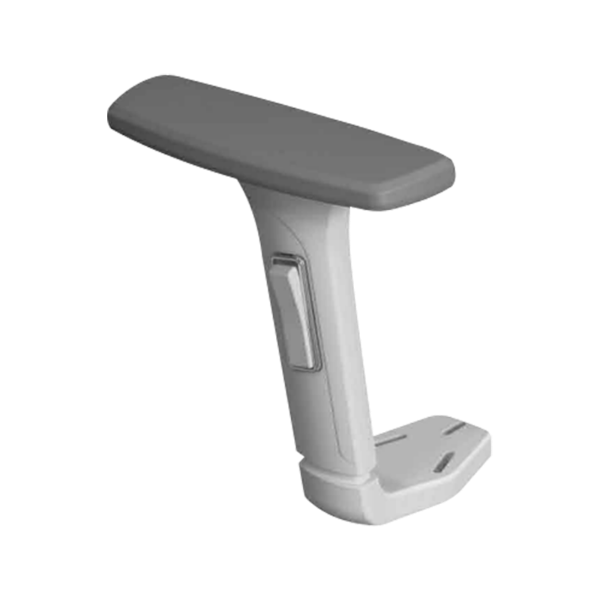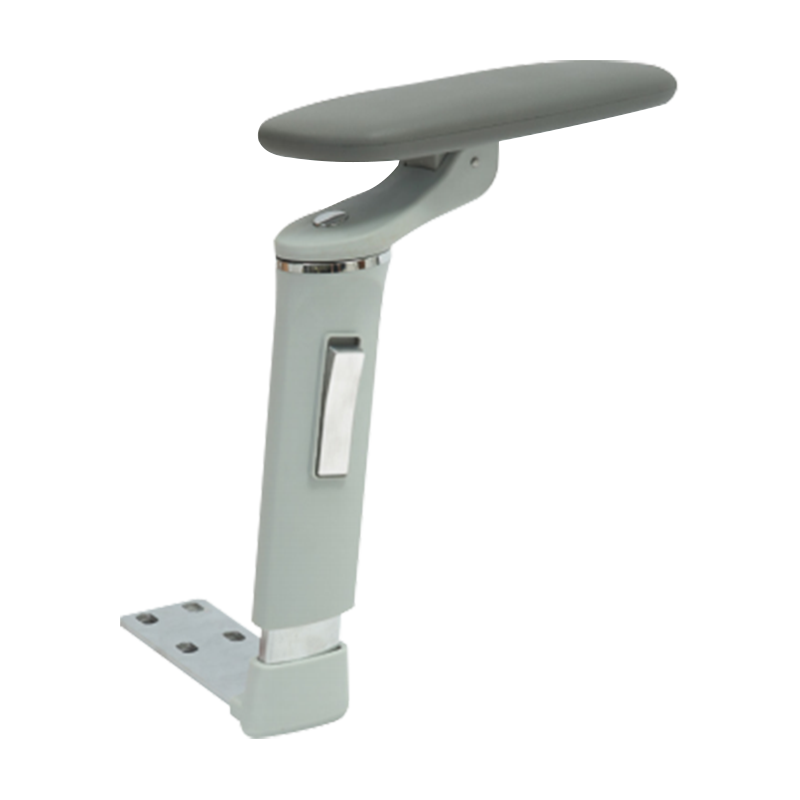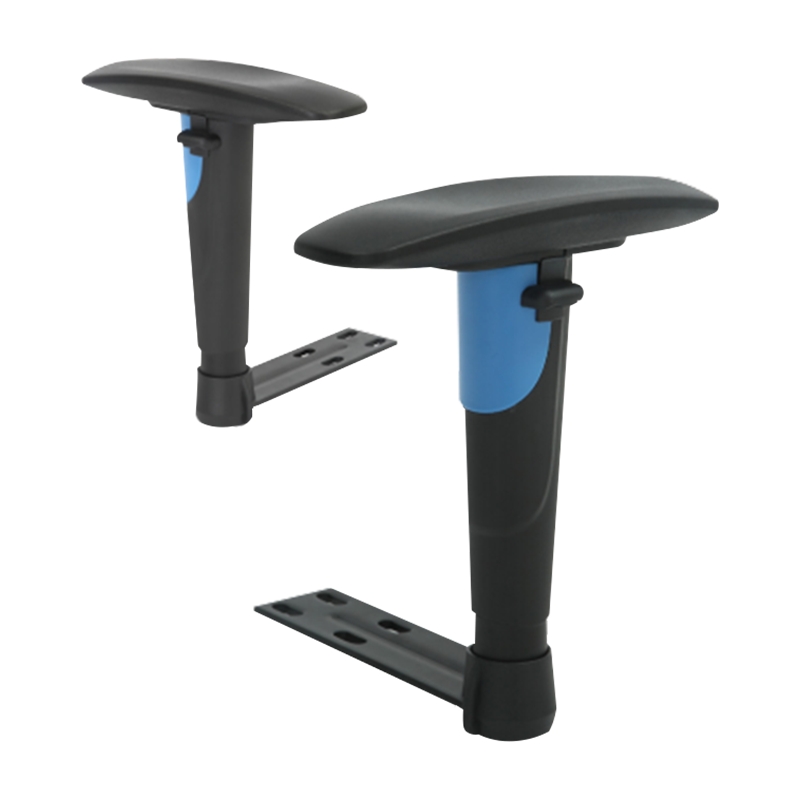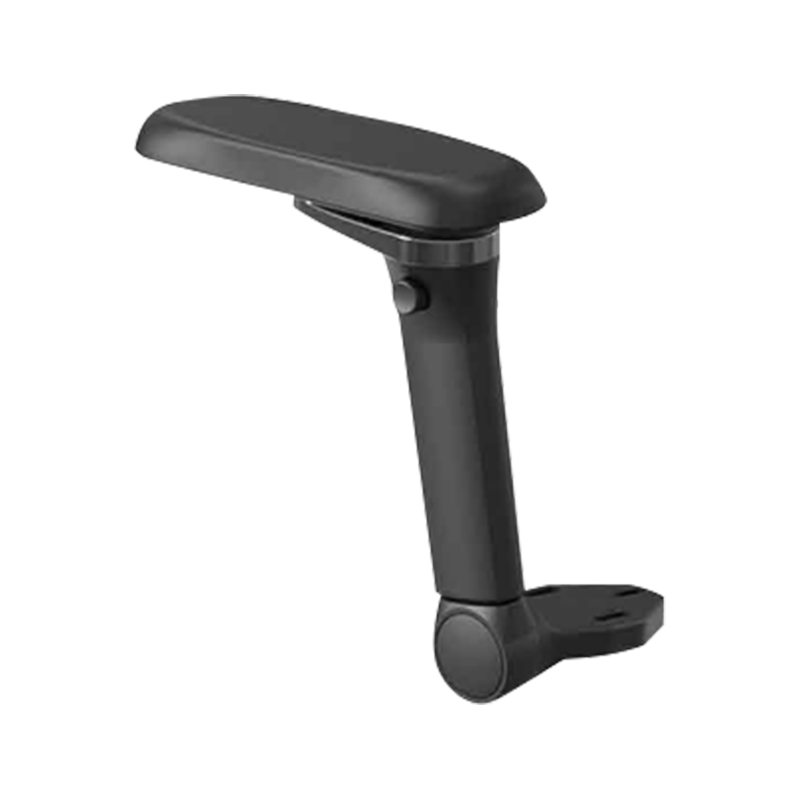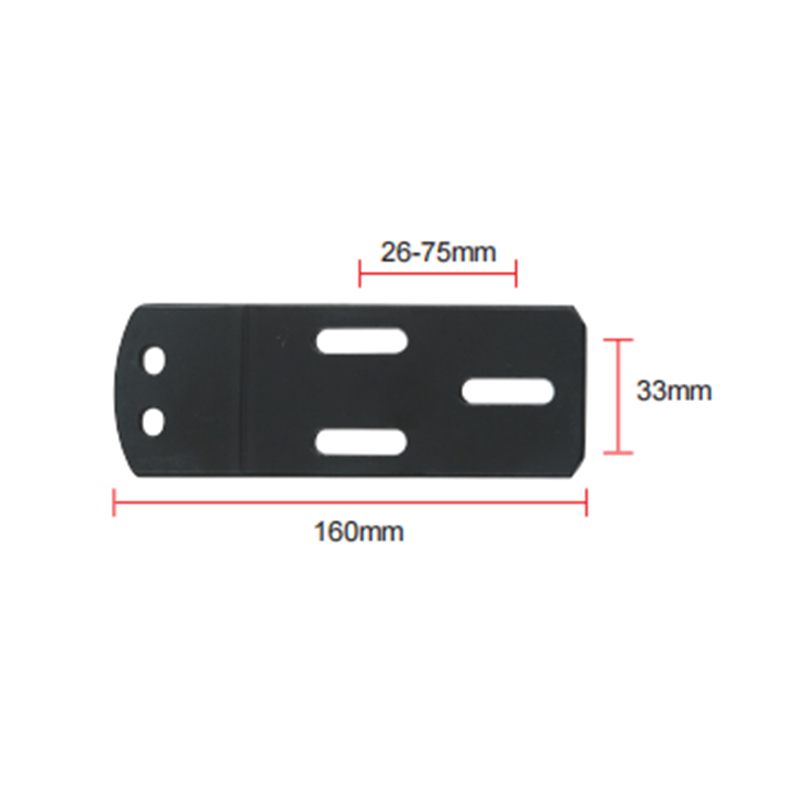Web Menu
Product Search
Master Your Comfort: The Customized Ergonomic Experience of 3D Armrests
In modern office and home life, discomfort from prolonged sitting in one position is a growing issue. Traditional armrest designs often fail to accommodate individual differences, leading to shoulder, neck, and wrist fatigue. The emergence of 3D armrests is a direct solution to this problem. They are more than just simple support components; they are a breakthrough ergonomic solution. This article will delve into how 3D armrests use multi-dimensional adjustments to provide users with an unprecedented, customized comfort experience, and their impact on future design.
What Are 3D Armrests?
3D armrests represent an ergonomic innovation that breaks the limitations of traditional armrest design. Unlike standard armrests that only adjust up and down, the core feature of a 3D armrest is its "three-dimensional" adjustability, allowing it to move freely in three-dimensional space for more precise and personalized support.
3D Armrests vs. Traditional Armrests
To better understand the advantages of 3D armrests, we can compare them using the following parameters:
| Parameter | Traditional Armrests | 3D Armrests |
|---|---|---|
| Height Adjustment | Up-and-down adjustment only, with fixed positions | Up-and-down adjustment, with a wider and more flexible range |
| Depth Adjustment | Generally non-adjustable, fixed position | Front-and-back adjustment, allowing for proper support based on arm length |
| Angle Adjustment | Non-adjustable, fixed angle | Side-to-side or inward-and-outward rotation, to adapt to various postures |
| Support Effect | Single support position, difficult to adapt to different body types | Multi-dimensional adjustment provides all-around support tailored to individual needs |
| Ergonomics | Basic ergonomics, only relieves some shoulder pressure | Comprehensive ergonomics, effectively distributes pressure on shoulders, elbows, and wrists |
| Core Advantage | Lower cost, simple structure | Personalized and customized support to enhance user comfort |
How 3D Armrests Work
The multi-dimensional adjustability of 3D armrests is due to their clever internal structure and connection design. They typically consist of one or more movable joints that allow the armrest to move smoothly in three main dimensions:
- Vertical Adjustment: Using an internal gas lift or mechanical locking system, the armrest height can be easily adjusted to ensure the elbow remains at an ideal 90-degree angle with the desk.
- Horizontal Adjustment (Depth): The armrest pad slides forward and backward on its base, allowing users to position the support point for maximum comfort and prevent their arms from dangling.
- Rotational Adjustment (Angle): The armrest pad can rotate inward or outward, allowing users to find the most natural and relaxed arm position for typing, using a mouse, or simply resting.
These flexible adjustments transform the 3D armrest from a passive support into a tool that actively adapts to the user, providing a customized comfort experience.
The Customized Ergonomic Experience of 3D Armrests
The core value of the 3D armrest is its ability to upgrade ergonomics from a "one-size-fits-all" design to a "tailor-made" personalized experience. It no longer passively supports your arms but actively adapts to your body and habits, achieving true comfort and health.
Core Advantage: All-Around Adaptation to Your Body
The multi-dimensional adjustability of the 3D armrest precisely solves the problem of traditional armrests failing to accommodate individual differences. Everyone has a different height, body type, work habit, and desk height, and the customizable nature of the 3D armrest is designed to address these differences.
- Relieve Shoulder Pressure: By adjusting vertically, the 3D armrest ensures your elbow is at the correct angle with the desk, allowing your shoulders to relax naturally and preventing muscle tension from shrugging or dangling arms.
- Support Arms and Wrists: The depth adjustment feature allows the 3D armrest to provide full support for your forearms, reducing the pressure on your wrists and arms from prolonged use of a keyboard and mouse.
- Adapt to Different Postures: The angle adjustment allows the 3D armrest to flexibly adapt to various operating postures. Whether typing, using a mouse, or leaning back to relax, you can find the most comfortable support point.
Specific Adjustment Scenarios and Their Benefits
To better understand how 3D armrests can change your work and life, let's look at a few specific application scenarios:
| Adjustment Method | Application Scenario | Benefits |
|---|---|---|
| Vertical Adjustment | Adapting to different desk heights or user heights | Keeps elbows at a 90-degree angle, allowing shoulders to relax, effectively relieving muscle tension in the shoulders and neck. |
| Depth Adjustment | Using different keyboards or mice, or leaning forward | Supports the forearm and elbow, prevents the arm from dangling, reduces wrist strain, and helps prevent "mouse hand." |
| Angle Adjustment | Typing, using a mouse, or leaning back to rest | Keeps the arm in the most natural and relaxed position, avoiding wrist strain from twisting. |
| Overall Flexibility | Frequently changing working postures or collaborating with colleagues | Easily adjusts the 3D armrest position to adapt to various temporary body postures, maintaining comfort. |
Through these fine-tuned adjustments, the 3D armrest transforms ergonomics from an abstract concept into a tangible experience. It gives you the power to "control" your own comfort, allowing you to maintain health and efficiency during long work hours.
3D Armrests: The Fusion of Ergonomics and Future Design
The value of the 3D armrest goes beyond its excellent ergonomic function. It represents an innovation in design philosophy, perfectly integrating rigorous scientific principles with a forward-thinking aesthetic to shape the new form of future office and living spaces. This fusion is reflected in several key aspects:
5508A-3D Multifunctional Chrome Swivel Chair Armrest Accessories
Design Aesthetics: Unifying Function and Art
Traditional armrest designs are often limited to basic functions, with a monotonous appearance that clashes with modern home and office environments. The design of the 3D armrest breaks this limitation.
- Fluid Lines: The shape of the 3D armrest is often more fluid and dynamic, with its multi-joint structure presenting a futuristic, mechanical aesthetic.
- Simplicity and Complexity: Despite its complex internal structure, the external design pursues ultimate simplicity, cleverly hiding all adjustment functions within an elegant shell, keeping the armrest visually clean and streamlined.
- Materials and Colors: Designers select materials and colors that match the overall style of the chair, making the 3D armrest an integral part of the chair's design, rather than a simple add-on.
Materials and Craftsmanship: Tech-Driven Futuristic Texture
The innovative design of the 3D armrest relies on advanced materials and precise manufacturing processes.
- High-Strength Engineering Plastics: Many 3D armrests use high-strength, lightweight engineering plastics, ensuring durability and stability while reducing overall weight.
- Metal Alloys: Key adjustment joints are often made from precision-cast metal alloys to provide strong support and ensure smooth adjustment and secure locking.
- Integrated Molding Process: Many 3D armrests use an integrated molding process, which reduces seams and components, enhancing both aesthetics and structural integrity.
Technology Integration: The Infinite Possibilities of Future 3D Armrests
The design of the 3D armrest provides a broad platform for future technological integration. While most current products are mechanically adjustable, we can anticipate their combination with smart technology in the future.
- Smart Sensing Systems: Built-in pressure sensors could monitor a user's posture and arm pressure in real-time. When the user's posture is incorrect, the 3D armrest might provide subtle vibrations or light cues to remind them to adjust.
- Automated Adjustment: Combined with smart office systems, future 3D armrests might automatically adjust to the optimal posture based on pre-set programs or user voice commands.
- Biofeedback: In the long run, 3D armrests could even integrate biofeedback technology to automatically optimize support based on a user's physiological data (like heart rate or muscle tension), providing a deeper level of health management.
The 3D armrest is more than just a functional component; it's the perfect intersection of ergonomics and future design philosophy. It redefines our expectations for comfort and aesthetics with innovative design and technology.
Buyer's Guide: How to Choose the Right 3D Armrest for You?
Choosing the right 3D armrest is a crucial step in improving your sitting posture. With many options available, understanding the key parameters and functions will help you find the product that best suits you. Here are some important factors to consider:
Key Factors to Consider
- Adjustment Range and Freedom: This is the core standard for measuring the performance of a 3D armrest. You need to pay attention to the adjustability in these dimensions:
- Height (Vertical): Is the adjustment range wide enough to accommodate your height and desk, ensuring your elbow can easily maintain a 90-degree angle?
- Depth (Horizontal): Can the armrest pad slide forward and backward to match the length of your arm and provide full support in different sitting postures?
- Angle (Rotational): Can the armrest rotate inward and outward so that your wrists and arms can be in the most natural and relaxed state when typing, using a mouse, or resting?
- Material and Comfort: The material of the armrest pad directly affects your user experience. High-quality armrest pads typically use soft yet supportive materials, such as high-density foam or PU (polyurethane) leather, which provide a comfortable feel while effectively distributing pressure.
- Stability and Durability: Whether the armrest locks securely after adjustment without wobbling or sinking is an important criterion for judging its quality. The smoothness and durability of the adjustment mechanism are equally important; a high-quality 3D armrest should be able to withstand long-term daily use.
A Purchasing Perspective Based on Company Philosophy
When making a choice, you can draw on the core philosophy of a company like Anji Xielong Furniture Co., Ltd. A good 3D armrest supplier typically adheres to the following principles:
- R&D and Innovation: Excellent 3D armrest products are backed by continuous R&D and innovation. This means the products are constantly being optimized in terms of function, design, and materials to meet higher user demands.
- Quality First: "Quality first" is the foundation of product reliability. When purchasing, you can pay attention to the details of the product's craftsmanship, the quality of the materials, and the smoothness of the adjustment mechanism—these are all indicators of high quality.
- Customer-Centricity: A good product is not just about its function, but also whether it truly solves customer pain points. A company dedicated to providing "efficient and high-quality service" will likely have product designs that are more aligned with users' actual habits.
By considering all these factors, you will be better able to evaluate and choose the right 3D armrest for you, adding a customized comfort experience to your daily work and life.
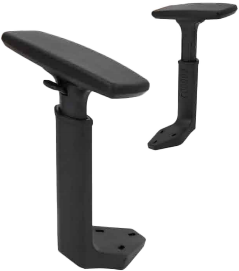
 Feel free to contact us
Feel free to contact us
- Product Fast Links
- Office Chair Armrest
- Hardware Steel Plate
- Polyurethane PU Surface
- Casters
- Contact Information
- Tangpu Industrial Park, Anji County, Huzhou City, Zhejiang Province, China
- [email protected]
- +86-13567973388



 English
English  Español
Español  عربى
عربى 
